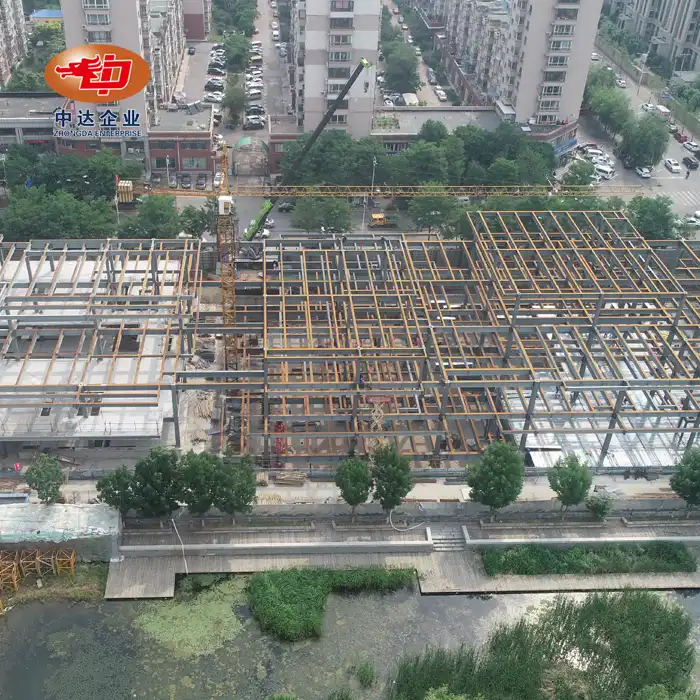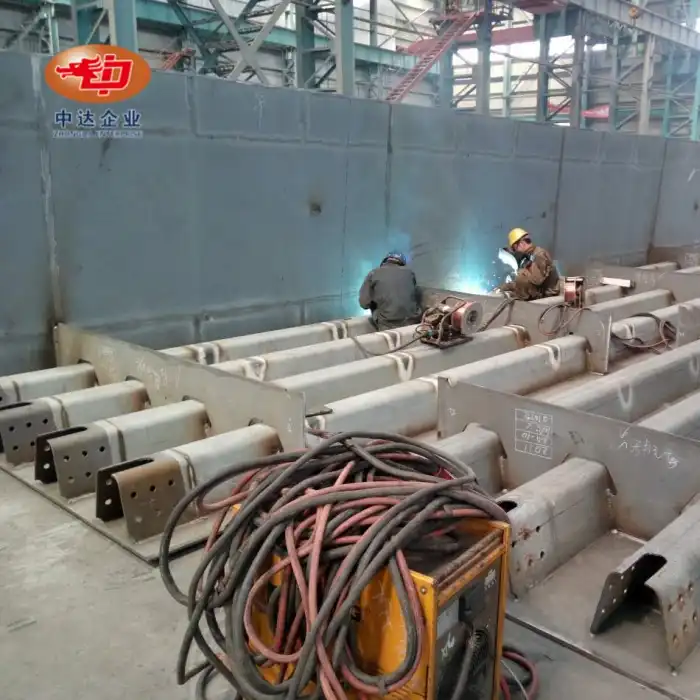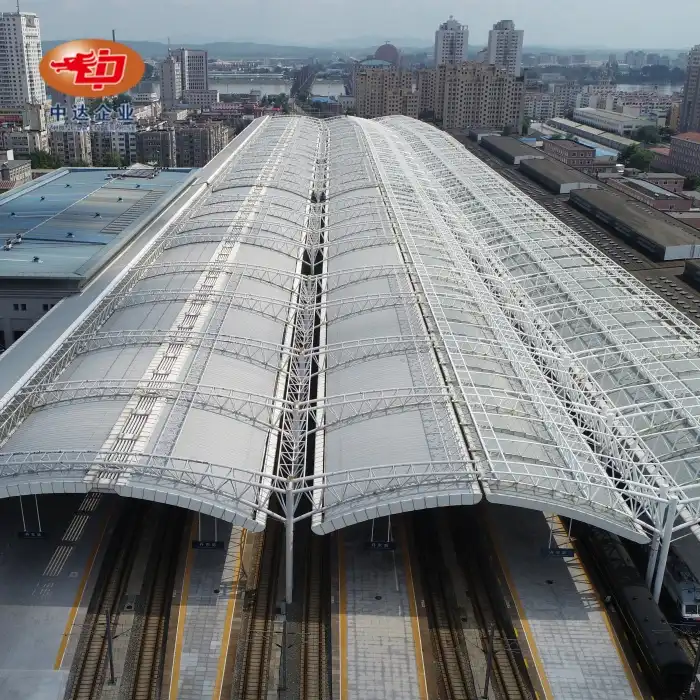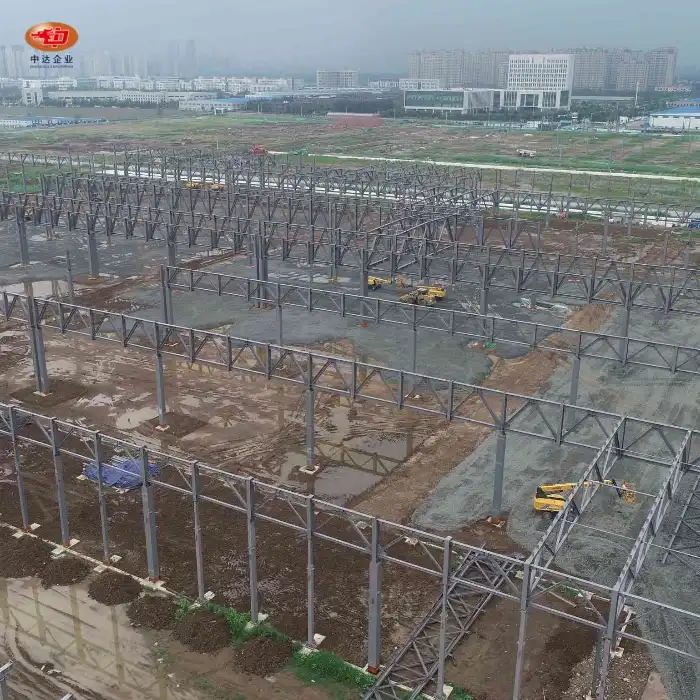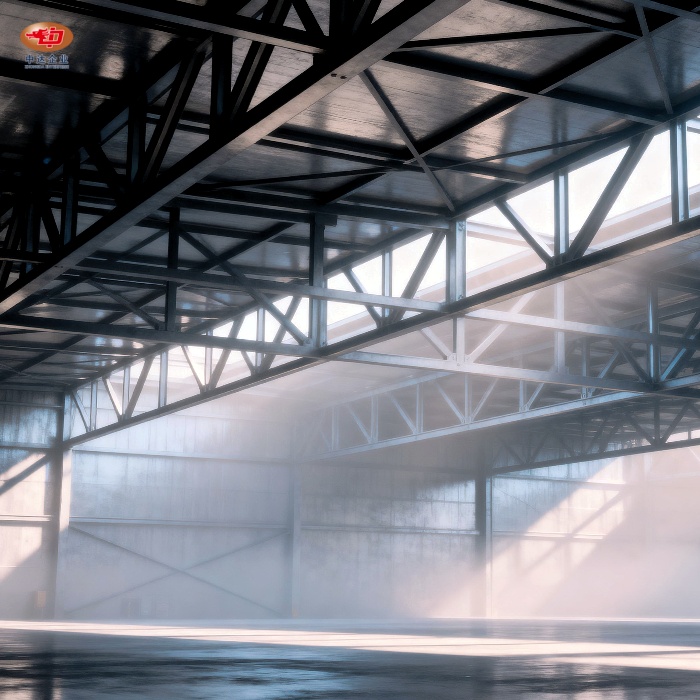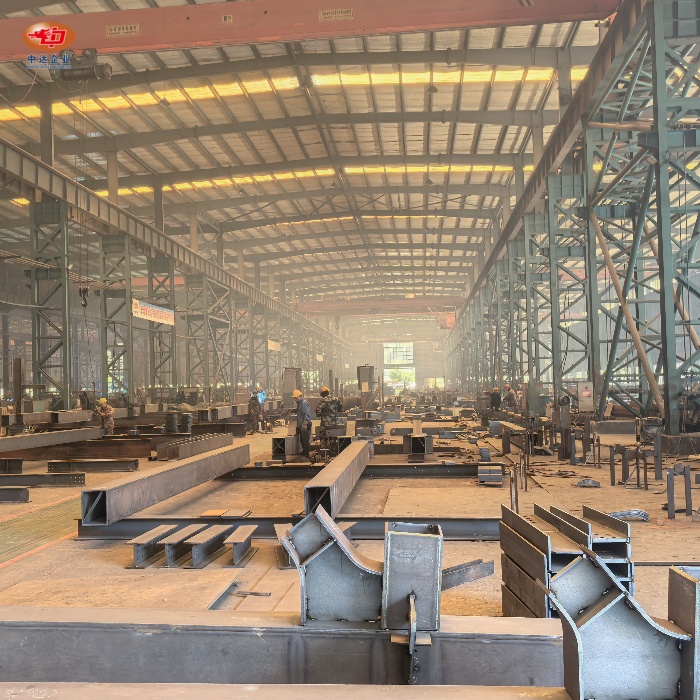
Key Factors in the Design of a Steel Truss Bridge
The design of a steel truss bridge is a complex process that requires careful consideration of various factors. These include load-bearing capacity, span length, environmental conditions, material selection, and construction methods. A well-designed steel truss bridge must balance strength, durability, and cost-effectiveness while meeting specific project requirements. At Shenyang Zhongda Steel Structure Co., Ltd., we specialize in creating innovative, high-quality steel truss bridges that excel in all these areas.
Structural Design and Load Distribution
Truss Configuration Selection
Selecting the right truss configuration is fundamental to achieving structural balance and efficiency. The Warren truss, known for its equilateral triangle design, offers excellent load distribution and material economy, while the Pratt truss provides superior tension and compression performance for longer spans. At Zhongda Steel, we tailor each configuration to the project's technical and environmental needs, ensuring optimal stability and cost-effectiveness. With span options from 30 to 150 meters, our engineers design and fabricate precision truss systems that meet diverse architectural and infrastructure requirements with exceptional reliability.
Load Capacity Analysis
Accurate load capacity evaluation is essential to maintaining the integrity and safety of any steel truss bridge. Engineers assess static and dynamic forces, including dead loads, live loads, and external environmental stresses such as wind and seismic activity. Zhongda Steel applies rigorous simulation and testing based on Highway-I level standards, ensuring our truss bridges can sustain up to 100 tons of load capacity. This comprehensive analysis helps prevent deformation, fatigue, and failure, guaranteeing that every structure maintains long-term performance under complex operational conditions.
Span Length Optimization
Span length directly impacts both the structural efficiency and overall project economics. An optimized span reduces unnecessary supports and foundations, enhancing design simplicity and lowering construction costs. At Zhongda Steel, we employ modular engineering and prefabrication techniques that make span customization straightforward and precise. This approach allows our team to quickly adapt designs to site-specific challenges, such as terrain variations or limited access points, ensuring the perfect balance between strength, aesthetics, and cost efficiency for every truss bridge project.
Material Selection and Durability
High-Strength Steel Utilization
The selection of the steel grade is a fundamental decision critically influencing a bridge's structural performance, load-bearing capacity, and overall service life. In our designs, we utilize ASTM A709 Gr.50 steel, which is further specified with Z35 Z-direction performance properties. This specific requirement guarantees exceptional through-thickness strength and provides outstanding resistance to lamellar tearing, a critical failure mode in welded connections. The application of this high-strength, high-quality material ensures our bridge structures possess the inherent robustness to reliably withstand extreme static, dynamic, and cyclical loads, as well as harsh environmental conditions, thereby guaranteeing long-term integrity and safety for the entirety of their design life.
Corrosion Protection Measures
Implementing effective and durable corrosion protection is absolutely vital for significantly extending a steel truss bridge's operational service life and minimizing long-term maintenance costs. Our comprehensive and advanced anti-corrosion solution involves a multi-layer coating system for maximum defense. This process begins with a robust 160μm (microns) thick thermal spray zinc coating, which acts as a sacrificial anode. This foundational layer is then followed by the application of a high-build epoxy mica iron intermediate coat for enhanced barrier protection, and finally, a durable aliphatic polyurethane topcoat is applied for superior resistance to UV radiation and weathering. This synergistic system provides long-lasting, superior protection against corrosion, rust, and environmental degradation.
Weathering Steel Options
For specific projects located in particularly challenging or highly corrosive environments, or where maintenance access is difficult, we offer high-performance weathering steel as a viable material option. This steel is specially formulated with alloying elements, which enables it to form a stable, adherent, and protective rust patina, often called a patina, on its surface upon exposure to the atmosphere over time. This dense patina layer actively retards further atmospheric corrosion by shielding the base metal, effectively making the steel "weather." This inherent protective mechanism significantly reduces the need for frequent painting and other maintenance interventions, thereby enhancing the structure's long-term durability and lifecycle cost-efficiency.
Construction and Maintenance Considerations
Modular Design for Rapid Assembly
Our modular design strategy fundamentally transforms the construction process by fabricating major bridge components off-site in a controlled factory setting. This methodology allows for their rapid assembly on-site, significantly accelerating project timelines. The direct benefits include a substantial reduction in required on-site labor and construction duration. Consequently, this approach not only yields significant cost savings but also dramatically minimizes the disruption and inconvenience typically caused to local traffic flows and surrounding communities, leading to a more efficient and considerate construction phase for all stakeholders involved.
Quality Control and Inspection
We enforce a rigorous quality control regime that is paramount to guaranteeing the steel truss bridge's structural integrity, long-term performance, and ultimate safety. To achieve this, we conduct full-node inspections utilizing advanced non-destructive testing (NDT) technologies, specifically Magnetic Particle Testing (MT) and Ultrasonic Testing (UT). These sophisticated methods are capable of detecting surface and sub-surface flaws invisible to the naked eye. This comprehensive and proactive inspection approach is critical for identifying and rectifying any potential material or welding defects early, preventing them from escalating into serious, costly, or hazardous issues after the steel truss bridge enters service.
Long-Term Maintenance Planning
Our design philosophy places a strong emphasis on long-term maintainability, which is crucial for minimizing the total lifecycle costs of the bridge. From the outset, we incorporate specific design features that proactively facilitate easier and safer access for all regular inspections and essential maintenance activities. This strategic foresight in planning helps to effectively extend the service lifespan of the entire structure by ensuring that upkeep can be performed efficiently. Ultimately, it leads to a considerable reduction in long-term operational and repair expenses, providing excellent value over the bridge's entire lifetime.
Conclusion
Designing a steel truss bridge requires a careful balance of structural efficiency, durability, and cost-effectiveness. By considering factors such as load distribution, material selection, and construction methods, engineers can create bridges that stand the test of time. At Shenyang Zhongda Steel Structure Co., Ltd., we combine cutting-edge technology with decades of experience to deliver superior steel truss bridges tailored to each project's unique requirements.
FAQs
1. What is the maximum span length for your steel truss bridges?
Our modular design allows for spans up to 150 meters.
2. How do you ensure the quality of your bridges?
We use full-node inspection with MT and UT technologies and adhere to ISO 9001 standards.
3. Can your bridges be customized for specific project needs?
Yes, we offer comprehensive OEM and ODM services to tailor our bridges to your exact specifications.
Choose Zhongda Steel for Your Next Bridge Project
As a leading steel truss bridge manufacturer, Zhongda Steel offers unparalleled expertise in bridge engineering. Our state-of-the-art facilities, including a 50T crane capacity workshop, enable us to handle large-scale projects efficiently. With a proven track record of over 60 landmark projects and a 70% client retention rate, we're your trusted partner for durable, high-quality steel truss bridges. Contact us at Ava@zd-steels.com to discuss your project needs.
References
1. American Institute of Steel Construction. (2022). Steel Bridge Design Handbook.
2. Federal Highway Administration. (2021). Bridge Design Specifications and Standards.
3. Journal of Bridge Engineering. (2023). Advances in Steel Truss Bridge Design.
4. National Steel Bridge Alliance. (2022). Guidelines for Steel Truss Bridge Construction.
5. Structural Engineering International. (2023). Innovations in Steel Bridge Technology.
6. Transportation Research Board. (2022). Best Practices in Steel Truss Bridge Maintenance.
YOU MAY LIKE












